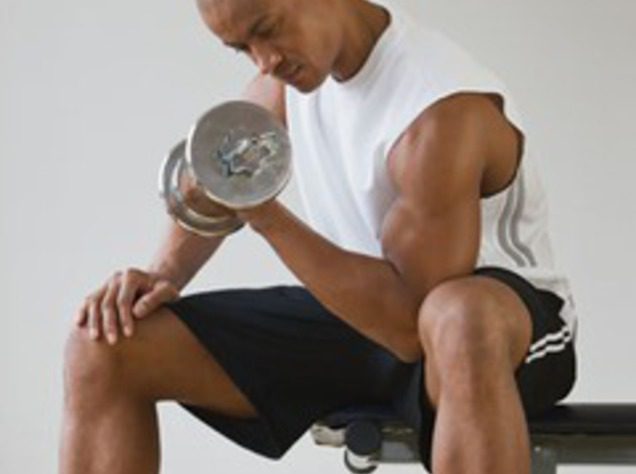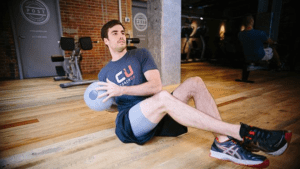Why do some people exercise a lot and never lose weight or gain muscle?
A few reasons contribute to this phenomenon:
1. Overall and Resting Metabolic Rate
The resting metabolic rate has been unchanged or actually decreases causing even more fat to be stored by the body. The reasons for this are because of improper diet & supplementation and a lack of a proper exercise regimen. A higher metabolic rate throughout the day results in more calories, actually Kcal, of energy being transformed into energy. In this case heat & movement. The higher the muscle to fat ratio in a body results in a higher metabolic rate. In addition, activity increases the metabolic rate.
2. Diet
A diet that has insufficient protein/amino acid content is detrimental for raising one’s metabolic rate. This is because the body tends to harvest protein before fat to meet its energy demands. As soon as the available glucose in the blood has transmuted into adenosine triphosphate then the next most easily accessible source of energy is stored in proteins.
By having a sufficient diet of protein and supplemented amino acids in the blood than structural proteins do not need to be broken down. Also, the additional amino acids can later be used to build more protein during the healing phase thereby increasing muscle mass, and therefore increasing the metabolic rate. This than reduces the need for the body to store as much “emergency” fat. Because any operation of the body increases metabolic rate, eating and digestion themselves become important.
Rather than a few large meals a day, spread the same caloric intake over the day in 5 or 6 smaller meals. This keeps the body working and the metabolic rate up more consistently throughout the day. Finally, be sure to have enough water in your system. The body needs water for various chemical reactions and for temperature control (especially during exercise). If there is not enough easily accessible water than the body will break open protein cells to use the water stored in them. However, there are people who have been conditioned with special water discipline training, and this effect is not as significant for them.
Another way to affect the metabolic rate by diet is through synthetic methods. The application of various herbs and drugs will increase the metabolic rate, but the dangers are numerous. Probably the best reasonably accessible combination of items is a stack of a caffeine source/s, an ephedrine source/s, and a salicylic acid source/s. This is known as an ECA stack, and probably allows for the largest fat burning event relative to metabolism. In addition, there are other drugs and herbs that can suppress appetite, reduce fat production, and catalyze fat breakdown mechanisms. Many of these are available over the counter, but anti-obesity drugs require a prescription. There are many dangers posed by any of these methods, and before beginning any regimen you should consult your physician.
3. Training methods
Exercises can easily be classified into two categories: Aerobic and Anaerobic. Aerobic exercise are those in which O2 (oxygen) plays a significant role in the biochemical reactions, and this is not the case for anaerobic exercises. Aerobic exercises are those that make people breathe more so: running, steppers, bicycling, etc…, and anaerobic exercises are those that emphasize resistance training: weight lifting, resistance machines, etc.
Endurance training like long distance running quickly burns blood glucose, some fat, and proteins. Because of the energy protocol of resources in the body endurance aerobics athletes are often very lean, and have little muscle mass. They continually burn their protein and fat because there is no available glucose. They train for years without any significant increase in muscle mass.
In contrast, sprinters are usually found to have much thicker muscles, and excellent muscle to fat ratios. Their training is highly interval. The body explodes, and then rests. During this process blood glucose is used, and fat and protein are used. Than during the resting periods blood glucose is refurbished, and can be used again. Another factor than comes into the energy production cycle, increasing metabolism. At higher rates of metabolism the ratio of glucose to fat for energy production changes. During the first sets a high percentage of glucose is utilized compared to fat. As the metabolism increases during the later sets the reverse occurs, a high percentage of fat is utilized as compared to glucose. That is, during a 1 hour aerobic session the exerciser is burning a much greater percentage of fat per unit of time towards the end of the hour than they were burning during the beginning. As long as they maintain sufficient water levels and supplemented amino acids in the bloodstream, than fat will be burned, and muscle mass will not be attacked.
So, 20 minutes on the treadmill isn’t going to do it. It should be more like one hour, and it’s got to be interval training so that glucose can be utilized more so. That way the proteins are not attacked early on when fat is still on the low side of the energy production protocol. I recommend one hour of aerobic training early in the morning when glucose levels are low, and therefore the glucose from the first meal can be directly used for exercise before it is transmuted into fat.
Anaerobic exercise is absolutely required to change the muscle to fat ratio. Obviously muscle mass needs to increase and fat decrease as a matter of definition. To do that the protein cells that make up muscle must be “ripped” so that during the healing process amino acids can fill in the ripped gaps of the cell thereby increasing the overall cell size and integrity, i.e. muscle mass. These larger more productive cells therefore require more energy to operate, and thus the overall, and resting, metabolic rate are increased. To their amazement the exerciser will probably find over time that they will be losing fat even though they will be eating more
Another training method that affects metabolism is cold water exposure. Swimmers develop very pliable and powerful bodies, but they can’t get that totally ripped look. The reason being is that they are constantly subjecting their bodies to below body temperature water. To protect itself and maintain temperature equilibrium over the long term the body adjusts the metabolism to maintain a greater than normal layer of fat near skin.
However, occasional exposure to cold water stimulates thermogenesis. The core of the body coalesces blood, and generates heat. This is due to some basic survival mechanisms that mammals have. Simultaneously the body’s metabolism is raised to accomplish this. Occasional short burst exposure to cold water can recalibrate the resting metabolic rate to a higher level. This is best accomplished by exposure to near or below freezing water temperatures for periods that can vary from 5 minutes to 20 minutes or more depending on event frequency. In addition, each individual is different. More than this only will induce fat layers to build up to protect the body. A note of caution: there are dangers involved with this practice that include shock induced heart attacks, seizures, vomiting, and hypothermia to name a few. Before beginning any training like this consult your physician.
There are many dangers posed by any of the methods in this article, and before beginning any regimen you should consult your physician.
How useful was this post?
Click on a star to rate it!
Average rating 5 / 5. Vote count: 1
No votes so far! Be the first to rate this post.




